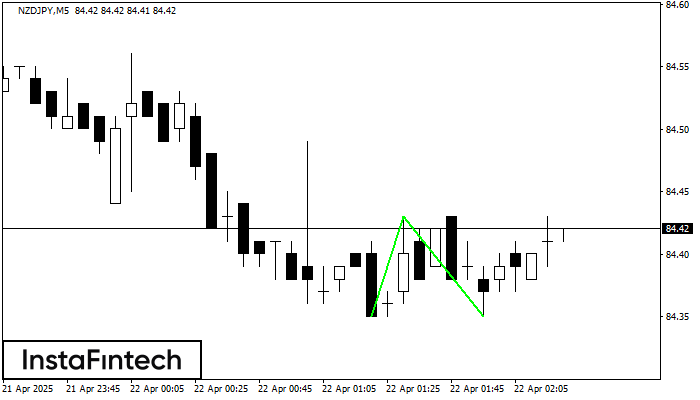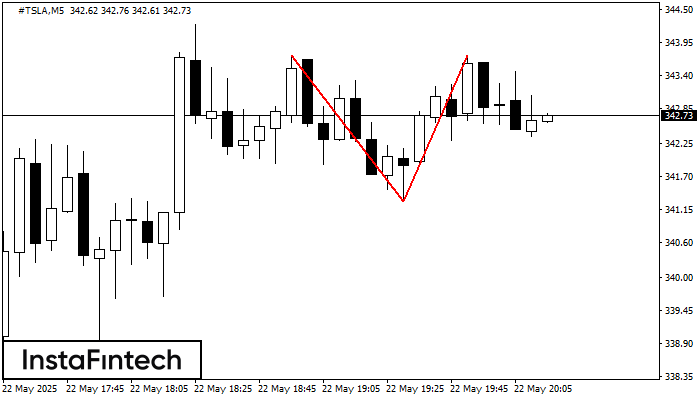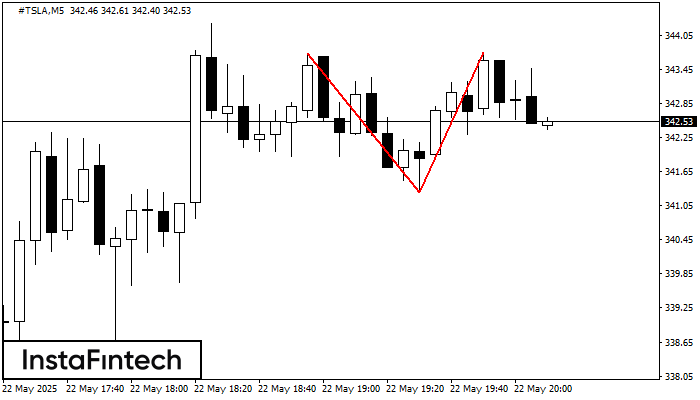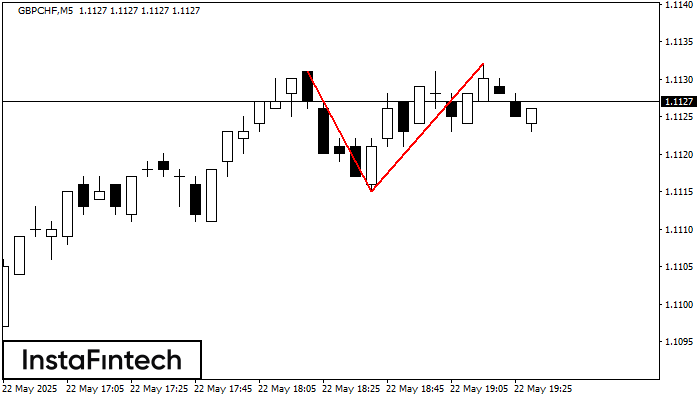Double Bottom
was formed on 22.04 at 01:21:05 (UTC+0)
signal strength 1 of 5

The Double Bottom pattern has been formed on NZDJPY M5. Characteristics: the support level 84.35; the resistance level 84.43; the width of the pattern 8 points. If the resistance level is broken, a change in the trend can be predicted with the first target point lying at the distance of 8 points.
The M5 and M15 time frames may have more false entry points.
See Also
- All
- All
- Bearish Rectangle
- Bearish Symmetrical Triangle
- Bearish Symmetrical Triangle
- Bullish Rectangle
- Double Top
- Double Top
- Triple Bottom
- Triple Bottom
- Triple Top
- Triple Top
- All
- All
- Buy
- Sale
- All
- 1
- 2
- 3
- 4
- 5
Double Top
was formed on 22.05 at 19:15:10 (UTC+0)
signal strength 1 of 5
The Double Top reversal pattern has been formed on #TSLA M5. Characteristics: the upper boundary 343.73; the lower boundary 341.29; the width of the pattern is 245 points. Sell trades
The M5 and M15 time frames may have more false entry points.
Open chart in a new window
Double Top
was formed on 22.05 at 19:10:28 (UTC+0)
signal strength 1 of 5
On the chart of #TSLA M5 the Double Top reversal pattern has been formed. Characteristics: the upper boundary 343.74; the lower boundary 341.29; the width of the pattern 245 points
The M5 and M15 time frames may have more false entry points.
Open chart in a new window
Double Top
was formed on 22.05 at 18:35:37 (UTC+0)
signal strength 1 of 5
On the chart of GBPCHF M5 the Double Top reversal pattern has been formed. Characteristics: the upper boundary 1.1132; the lower boundary 1.1115; the width of the pattern 17 points
The M5 and M15 time frames may have more false entry points.
Open chart in a new window





















